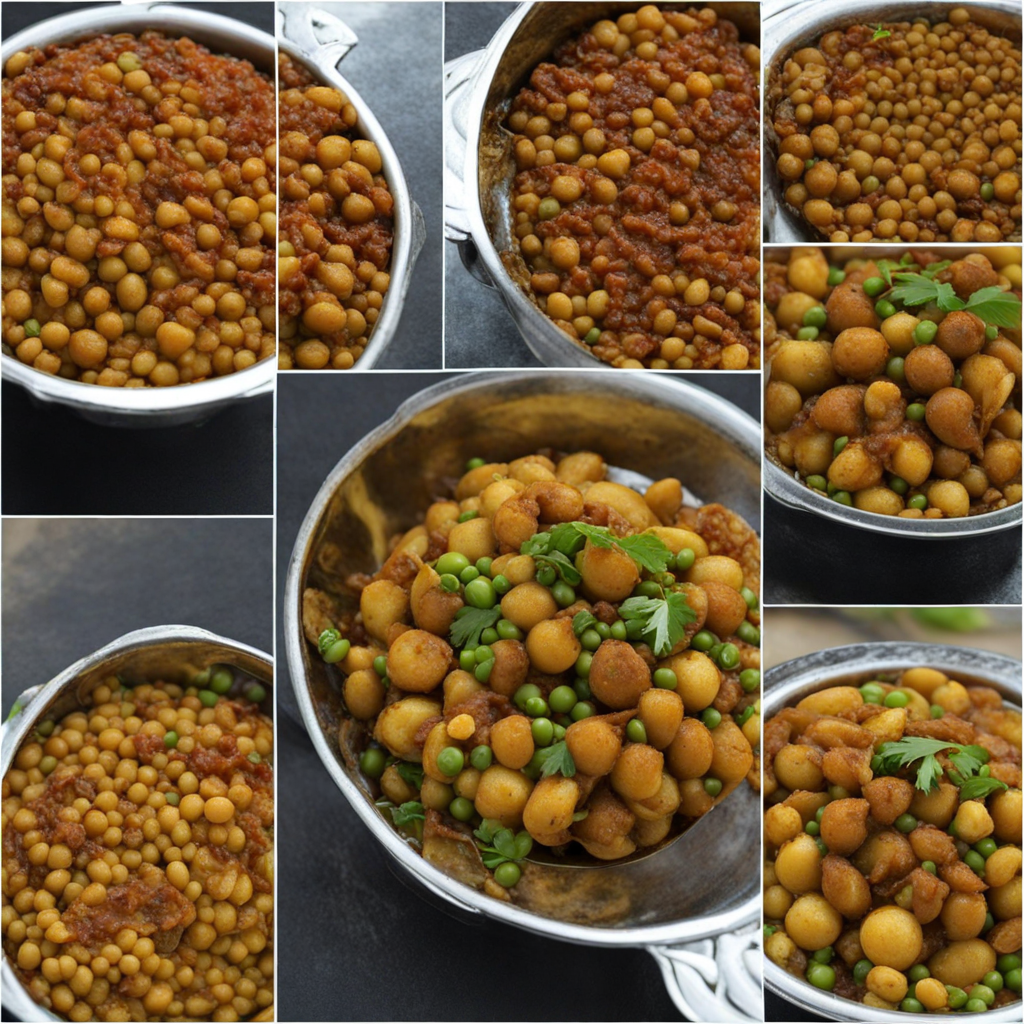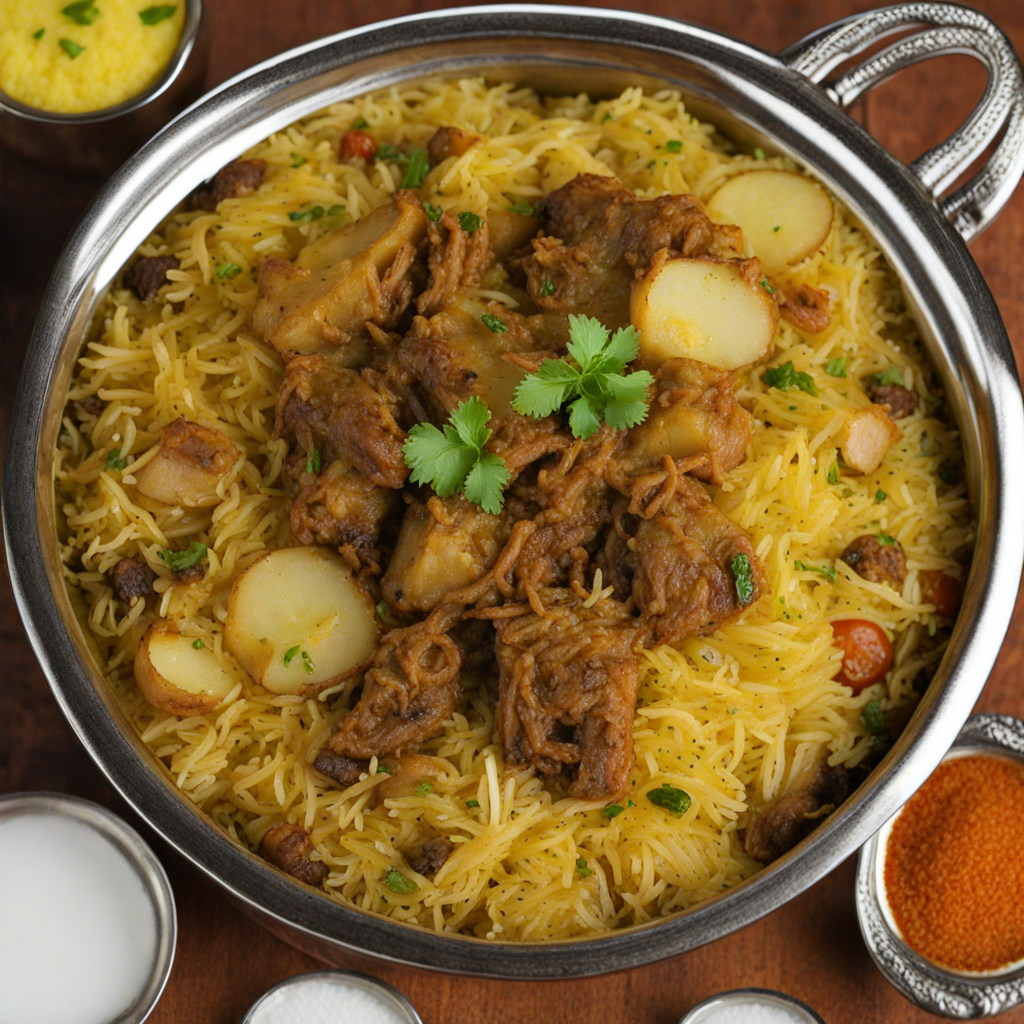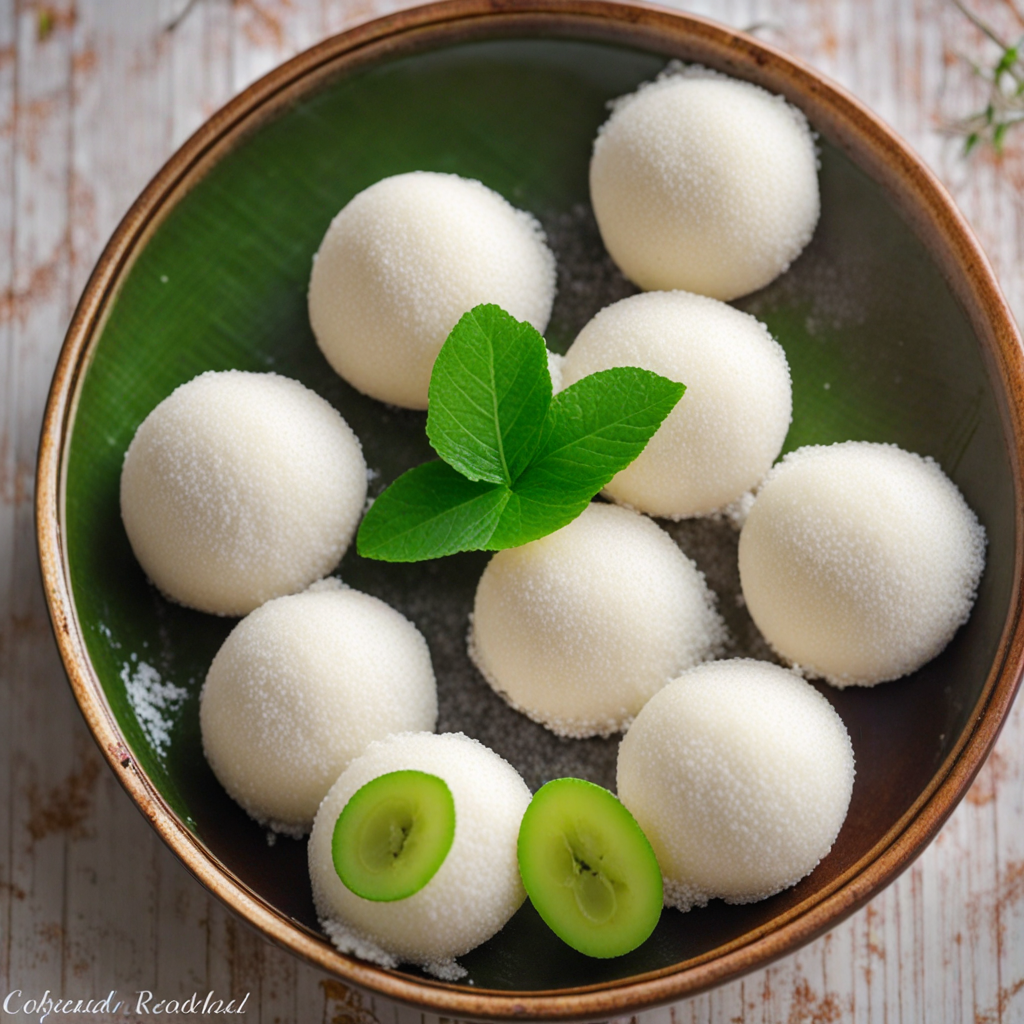Chotpoti
Chotpoti is a beloved street food from Bangladesh, renowned for its vibrant flavors and unique combination of ingredients. This dish typically features a base of boiled chickpeas and potatoes, which are seasoned with a medley of spices and herbs. The chickpeas are tender and nutty, while the potatoes add a creamy texture, creating a satisfying foundation for the dish. What sets Chotpoti apart is the tantalizing tamarind sauce, which introduces a sweet and tangy dimension, perfectly balancing the spices that include cumin, coriander, and a hint of chili for warmth. To elevate the dish further, Chotpoti is often garnished with finely chopped onions, green chilies, and fresh coriander leaves, adding a crunch and freshness to each bite. The presentation is colorful, with a sprinkling of crispy fried dough (known as 'chola') or puffed rice on top, providing an extra layer of texture. The combination of flavors is a delightful explosion that dances on the palate, making it a popular choice among food enthusiasts. As you indulge in this street food delight, you'll find that Chotpoti is not just a meal, but a sensory experience that captures the essence of Bangladeshi cuisine. It's often enjoyed as a quick snack or a light meal, perfect for sharing with friends at roadside stalls or bustling markets. The communal aspect of enjoying Chotpoti adds to its charm, as you savor each bite while soaking in the lively atmosphere that accompanies this culinary gem.
How It Became This Dish
The Flavorful Journey of Chotpoti: A Culinary Gem of Bangladesh Origin: The Birthplace of Chotpoti Chotpoti, a beloved street food from Bangladesh, is a vibrant and flavorful dish that has its roots deeply embedded in the rich culinary traditions of the region. Its origin can be traced back to the bustling streets of Dhaka, the capital city, where it emerged as a popular snack among the urban populace in the mid-20th century. The dish is believed to have evolved from the traditional Bengali dish called "chaat," which is a category of savory snacks that includes a variety of ingredients and flavors. Chotpoti is primarily made from boiled chickpeas, potatoes, and various spices, topped with a tangy tamarind sauce and garnished with chopped onions, green chilies, and boiled eggs. The dish is known for its complex flavor profile, which combines elements of sweetness, tanginess, and spiciness, making it an instant crowd-pleaser. The preparation of chotpoti is often seen as a communal activity, where street vendors skillfully mix the ingredients in large bowls, creating a spectacle that draws in hungry passersby. Cultural Significance: A Street Food Staple Chotpoti is more than just a snack; it holds a significant place in the cultural fabric of Bangladesh. It is a symbol of the vibrant street food culture that thrives in urban areas, offering a quick and affordable meal option for people from all walks of life. The dish is particularly popular among young people and students, often enjoyed as a late-night snack or a post-work indulgence. The preparation of chotpoti often takes place in bustling street markets, where vendors set up their stalls, enticing customers with the delicious aroma of spices and the sight of fresh ingredients being mixed. The communal aspect of enjoying chotpoti cannot be overlooked; it is often shared among friends or family, fostering a sense of togetherness and connection. The dish is also a common feature at social gatherings, celebrations, and even festivals, further solidifying its status as a beloved culinary staple. Development Over Time: From Street Stalls to Gourmet Plates As Bangladesh has evolved, so too has the preparation and presentation of chotpoti. Initially, the dish was primarily associated with street vendors who catered to the working class, providing a quick and affordable meal. However, with the rise of urbanization and globalization in the late 20th century, chotpoti began to gain recognition beyond its humble street origins. The 1990s and early 2000s saw a surge in the popularity of street food, and chotpoti became a trendy option not only in Bangladesh but also among the Bangladeshi diaspora around the world. Restaurants and food stalls began to experiment with the traditional recipe, incorporating modern twists and gourmet presentations. Chefs started to include innovative ingredients such as avocado or fusion flavors while maintaining the essence of the classic dish. In recent years, the rise of food blogging and social media has played a significant role in the resurgence of traditional dishes like chotpoti. Food enthusiasts and influencers have taken to platforms like Instagram and YouTube to share their experiences, creating visually appealing content that showcases the colors and textures of the dish. This online presence has introduced chotpoti to a wider audience, encouraging people to explore Bangladeshi cuisine and appreciate its depth and diversity. Regional Variations: The Diversity of Chotpoti While chotpoti is primarily associated with Dhaka, several regional variations have emerged, reflecting local tastes and ingredients. For instance, in Chittagong, a coastal city in southeastern Bangladesh, a similar dish called "fuchka" (also known as "pani puri" in India) is popular, featuring crispy hollow puris filled with spiced water, chickpeas, and potatoes. This variation showcases the versatility of the ingredients and the adaptability of the dish to local preferences. In addition to regional differences, chotpoti has also inspired a variety of toppings and accompaniments. Some vendors add crispy fried noodles or crushed papri (a type of fried dough) for added texture, while others serve it with a side of spicy chutney or yogurt for a creamier experience. These variations highlight the creativity of street food vendors and their ability to cater to diverse palates. Chotpoti Today: A Culinary Icon Today, chotpoti stands as a culinary icon of Bangladesh, celebrated for its rich flavors and cultural significance. It is not only a street food staple but also a dish that evokes nostalgia for many Bangladeshis, serving as a reminder of home and cherished memories. Families often have their favorite vendors, and the act of enjoying chotpoti together has become a cherished tradition. The dish has also gained international recognition, with Bangladeshi restaurants around the world incorporating chotpoti into their menus. Food festivals celebrating Bangladeshi cuisine often feature chotpoti as a highlight, showcasing its appeal to a global audience. Chefs and food enthusiasts continue to experiment with the dish, creating new interpretations while respecting its traditional roots. Moreover, chotpoti has sparked interest among food historians and culinary researchers, who delve into its history and cultural significance. The dish is often used as a case study in discussions about street food culture, globalization, and the preservation of traditional culinary practices in an ever-changing world. Conclusion: A Tapestry of Flavors and Memories In conclusion, chotpoti is not just a dish; it is a reflection of the vibrant culture and culinary heritage of Bangladesh. Its evolution from humble street food to a celebrated icon illustrates the dynamic nature of food and its ability to connect people across generations and geographical boundaries. Whether enjoyed from a roadside stall or a gourmet restaurant, chotpoti continues to delight the senses and create lasting memories, making it a true treasure of Bangladeshi cuisine. As we savor its flavors, we also celebrate the rich tapestry of history, culture, and community that chotpoti represents—a dish that brings people together, one spicy bite at a time.
You may like
Discover local flavors from Bangladesh







